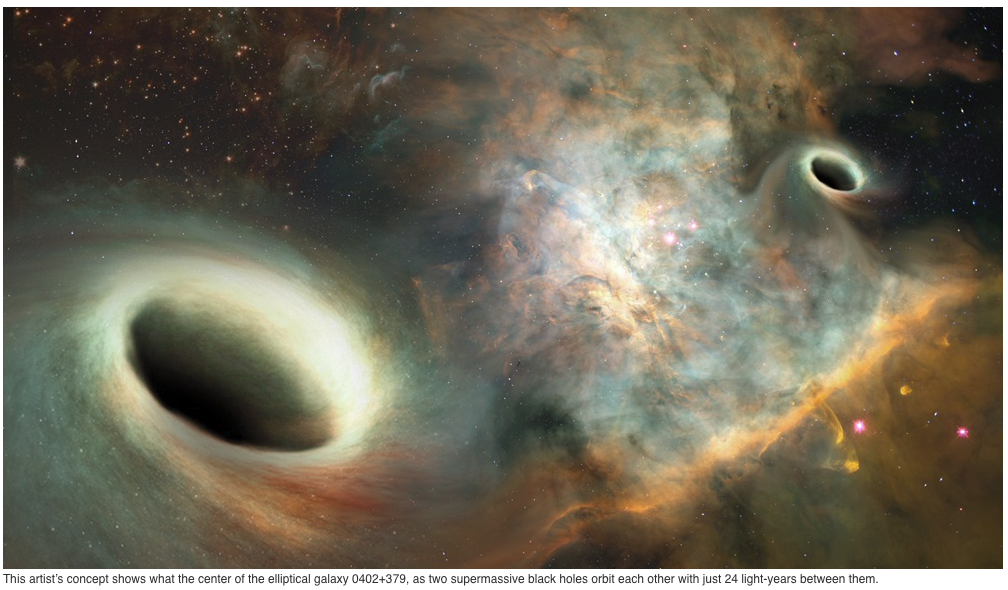 Credit: Josh Valenzuela/University of New Mexico
Credit: Josh Valenzuela/University of New Mexico
Astronomers observed a giant elliptical galaxy called 0402+379 and detected that it hosts two supermassive black holes (SMBHs) that are 24 light years apart. The SMBHs have a combined mass of about 15 billion times the mass of our Sun and takes them about 30,000 years to complete a single orbit. The observations were made by the National Science Foundation’s Very Long Baseline Array (VLBA), a radio telescope system that uses 10 antennas located at large distance a configuration that allows observations o significantly greater detail than using one dish alone.
Most, if not all, galaxies host a SMBH at their centres. When two galaxies collide, their SMBHs coexist in the merged system for a short period of time and then they finally combine, leaving behind a single object. In the case of the observed giant elliptical galaxy, this hasn’t taken place yet but, in a few million years, the two SMBHs will eventually merge. When this happens gravitational waves will be generated, like those detected a few months ago by LIGO.
Astrophysicists will continue observing 0402+379 to improve their understanding of the orbit and the masses of the black holes as well as how such systems interact.
Publication: Bansal et al. 2017
Source: Astronomy.com
